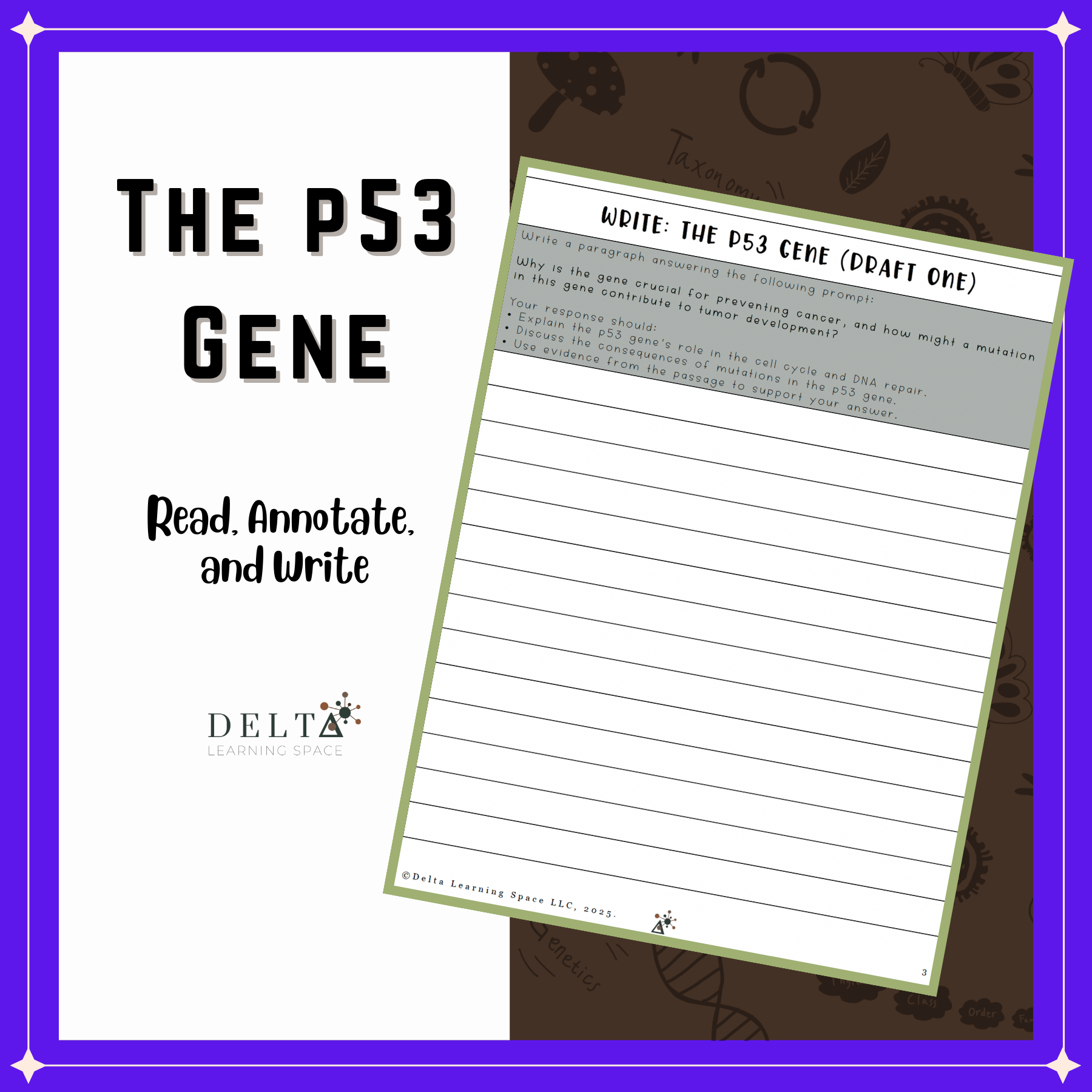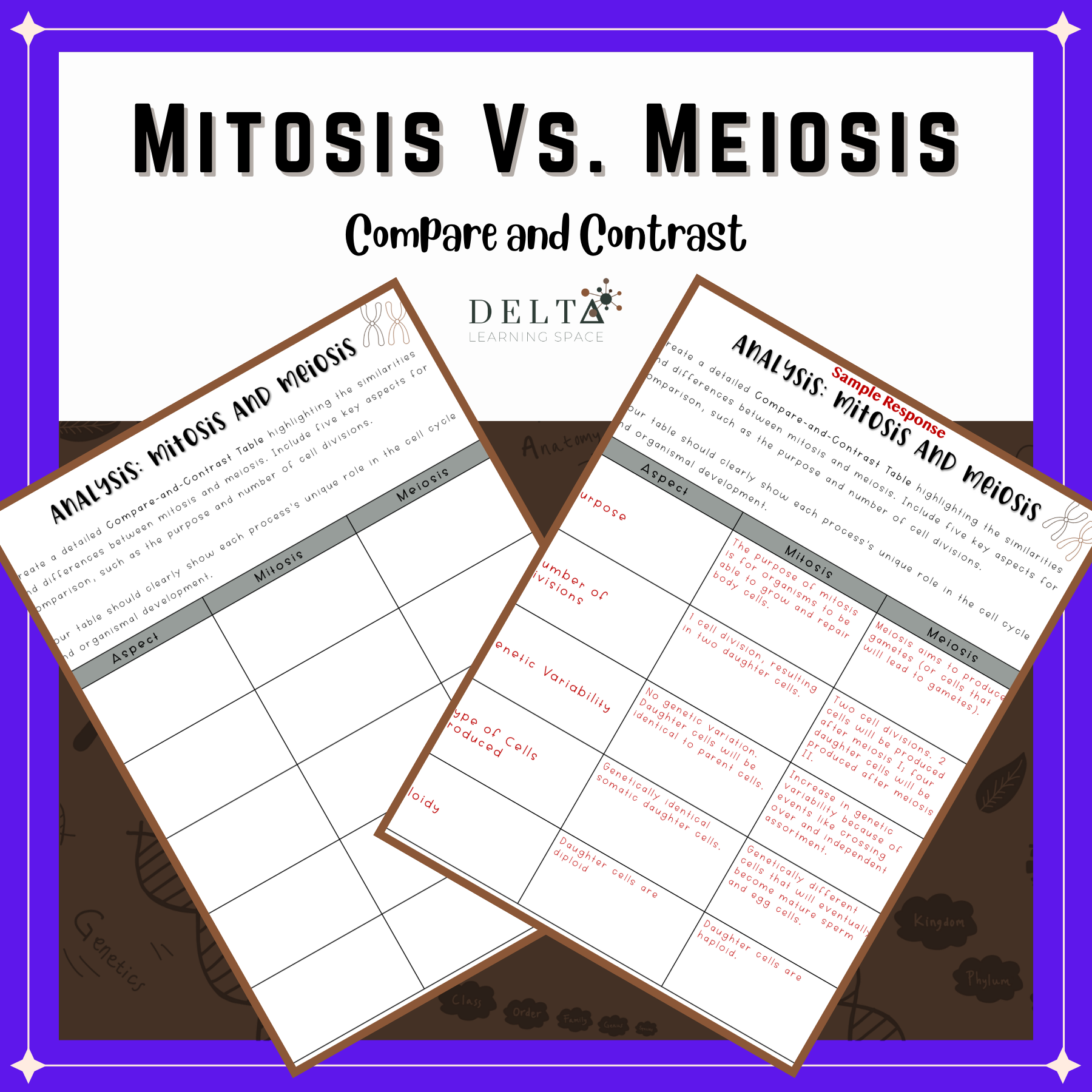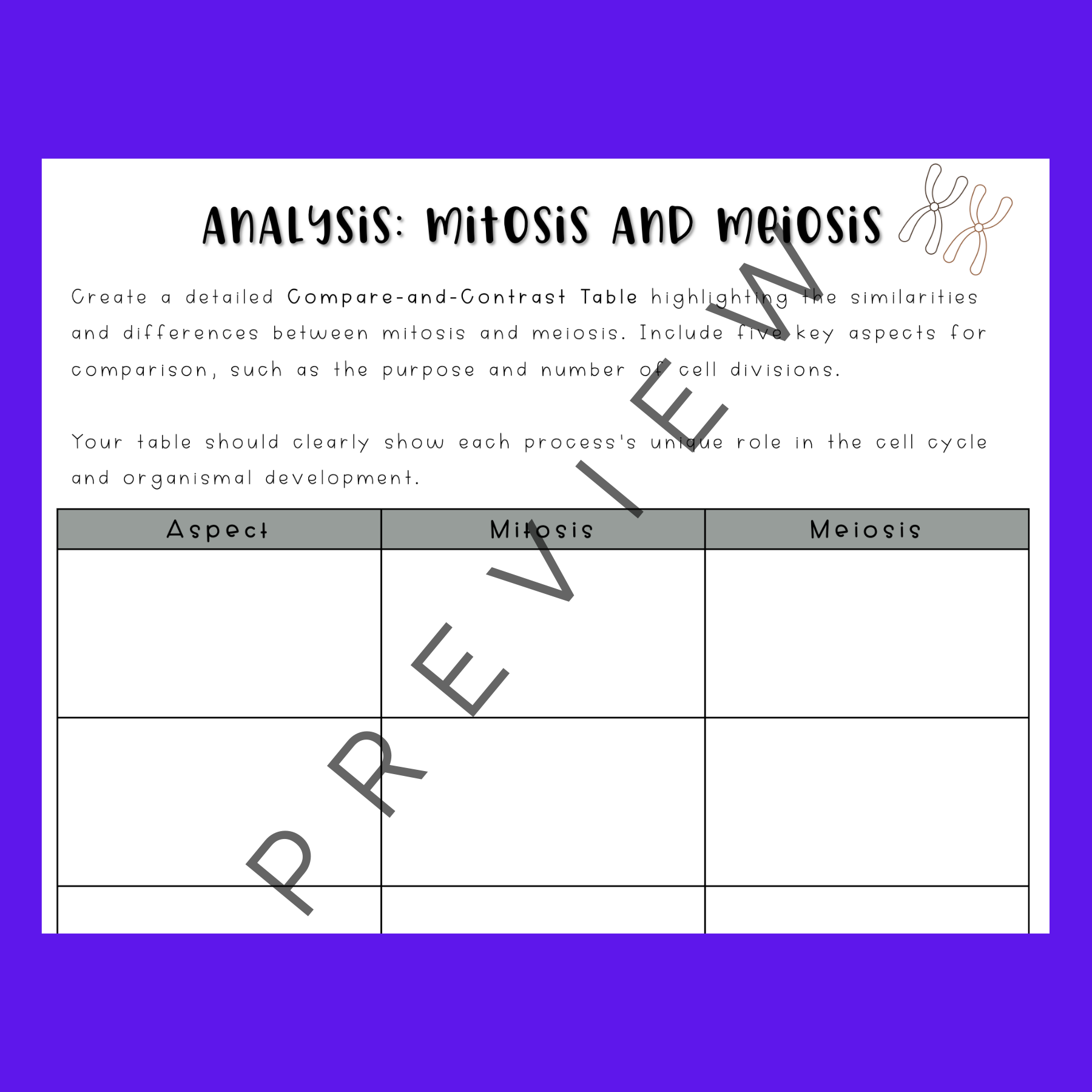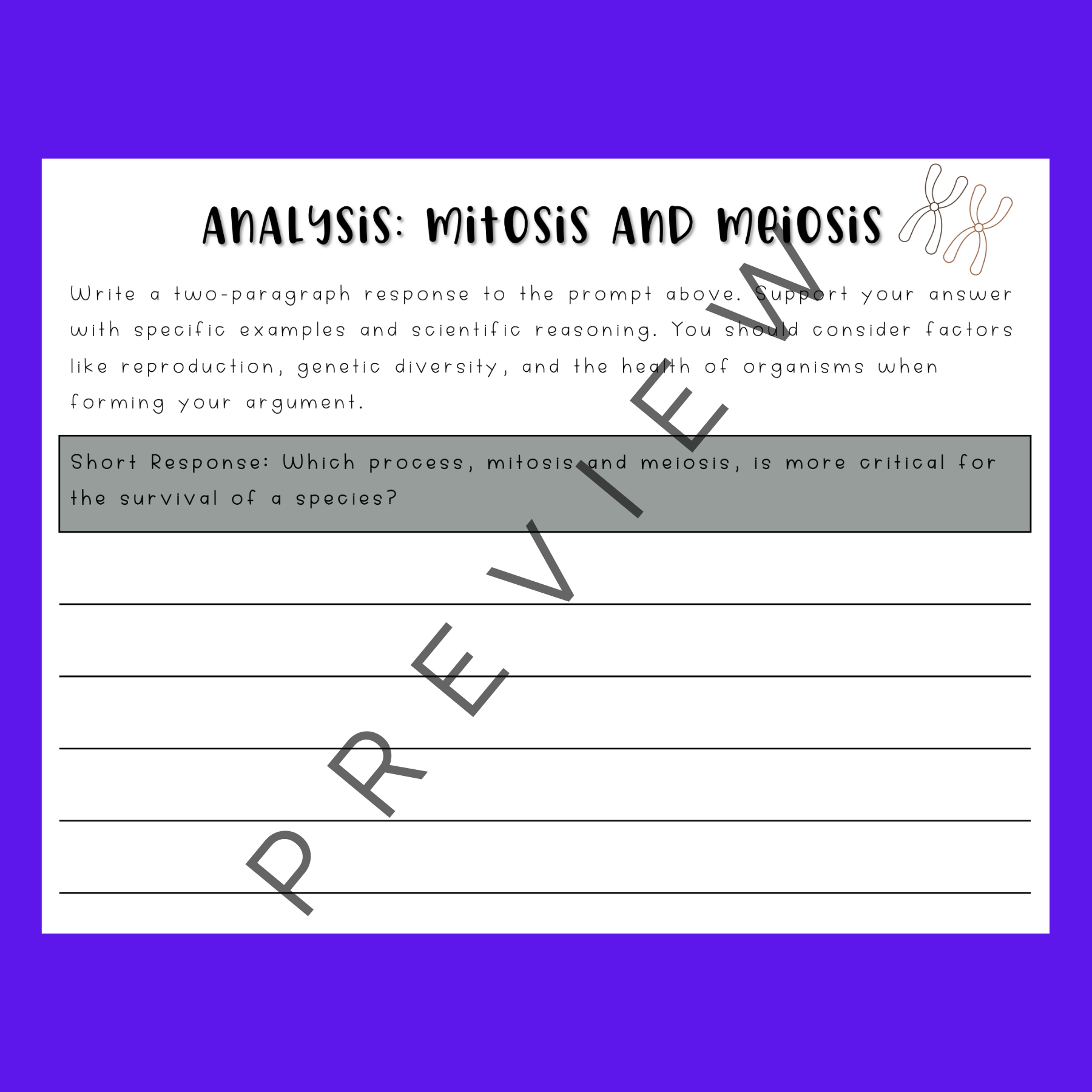The p53 Gene: Read, Annotate, and Write
Engage your students with this comprehensive activity designed to deepen their understanding of the p53 gene, a critical tumor suppressor involved in cell cycle regulation and cancer prevention. This resource promotes scientific literacy through a multi-step learning experience integrating reading comprehension, annotation strategies, and analytical writing.
What's Included:
A detailed passage explaining the role of the p53 gene in DNA repair and apoptosis, highlighting the effects of mutations.
A vocabulary refresher section to support comprehension of key terms like apoptosis, tumor suppressor, and mutation.
An annotation guide and graphic organizer to structure student responses effectively.
A writing prompt encouraging students to explain the p53 gene's importance and the consequences of its mutation, with an emphasis on using textual evidence.
Peer review sheets and a detailed rubric for evaluating content understanding, evidence use, organization, and mechanics.
Key Skills Developed:
Reading and annotating scientific texts
Synthesizing and explaining biological concepts
Using evidence-based writing
Constructive peer feedback and paragraph revision
Ideal for high school biology classes, this resource fosters critical thinking about genetics and the molecular basis of cancer while providing a platform for improving academic writing.
Note: Sensitive content related to cancer may arise; please consider student needs before assigning.
Engage your students with this comprehensive activity designed to deepen their understanding of the p53 gene, a critical tumor suppressor involved in cell cycle regulation and cancer prevention. This resource promotes scientific literacy through a multi-step learning experience integrating reading comprehension, annotation strategies, and analytical writing.
What's Included:
A detailed passage explaining the role of the p53 gene in DNA repair and apoptosis, highlighting the effects of mutations.
A vocabulary refresher section to support comprehension of key terms like apoptosis, tumor suppressor, and mutation.
An annotation guide and graphic organizer to structure student responses effectively.
A writing prompt encouraging students to explain the p53 gene's importance and the consequences of its mutation, with an emphasis on using textual evidence.
Peer review sheets and a detailed rubric for evaluating content understanding, evidence use, organization, and mechanics.
Key Skills Developed:
Reading and annotating scientific texts
Synthesizing and explaining biological concepts
Using evidence-based writing
Constructive peer feedback and paragraph revision
Ideal for high school biology classes, this resource fosters critical thinking about genetics and the molecular basis of cancer while providing a platform for improving academic writing.
Note: Sensitive content related to cancer may arise; please consider student needs before assigning.
Engage your students with this comprehensive activity designed to deepen their understanding of the p53 gene, a critical tumor suppressor involved in cell cycle regulation and cancer prevention. This resource promotes scientific literacy through a multi-step learning experience integrating reading comprehension, annotation strategies, and analytical writing.
What's Included:
A detailed passage explaining the role of the p53 gene in DNA repair and apoptosis, highlighting the effects of mutations.
A vocabulary refresher section to support comprehension of key terms like apoptosis, tumor suppressor, and mutation.
An annotation guide and graphic organizer to structure student responses effectively.
A writing prompt encouraging students to explain the p53 gene's importance and the consequences of its mutation, with an emphasis on using textual evidence.
Peer review sheets and a detailed rubric for evaluating content understanding, evidence use, organization, and mechanics.
Key Skills Developed:
Reading and annotating scientific texts
Synthesizing and explaining biological concepts
Using evidence-based writing
Constructive peer feedback and paragraph revision
Ideal for high school biology classes, this resource fosters critical thinking about genetics and the molecular basis of cancer while providing a platform for improving academic writing.
Note: Sensitive content related to cancer may arise; please consider student needs before assigning.
Cross-Disciplinary Applications:
This activity integrates science literacy and writing skills, making it a versatile tool for interdisciplinary instruction.
Science and Literacy:
Students read, annotate, and analyze a scientific text about the p53 gene, enhancing their ability to interpret complex biological information. They apply close reading strategies and develop annotation techniques that are valuable across multiple subjects.
Writing and Communication:
The assignment emphasizes evidence-based writing, aligning with language arts standards for constructing organized, well-supported arguments. This practice builds proficiency in expository and analytical writing, skills critical for both science and English courses.
Peer Review and Revision:
Through structured peer feedback and multiple drafts, students learn to evaluate and refine written work, promoting collaboration and metacognitive awareness, applicable in any subject where writing is assessed.
Critical Thinking and Ethics:
By exploring the implications of p53 mutations in cancer, students engage with bioethical considerations, encouraging reflection on scientific responsibility and human health, a topic suitable for social studies discussions around medical ethics and societal impact.








